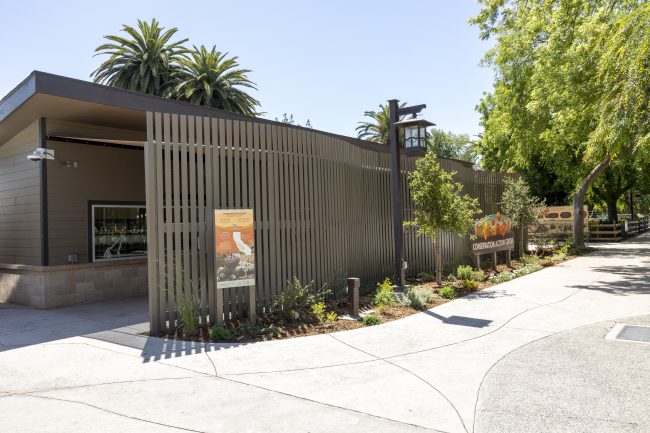Blunt-nosed leopard lizards are medium-large lizards (12” in total length) that only occur in remnant San Joaquin Desert habitat within California’s San Joaquin Valley and surrounding foothills. They are sit-and-wait predators that primarily eat insects. They rely on burrows, often dug by rodents such as the giant kangaroo rats, to avoid extreme temperatures in the summer and winter and to avoid predators. Each breeding season (April-July), females develop bright orange spots on their sides and males develop a pinkish-orange “wash” covering the underside and legs. They are short-lived in the wild (1-2 years) but can live 5 years or more in captivity. Despite being listed on the inaugural US Endangered Species List in 1967, their populations have continued to decline. In 2020, Fresno Chaffee Zoo developed a captive breeding program that has produced over 100 offspring and began releasing animals back to the wild in 2023.
Size: Adults are up to 12 inches in length and weight 1.5-2 oz. Males are typically larger than females.
Diet: Insects and other arthropods, with grasshoppers being the most common prey item.
Habitat: Open and patchy vegetated areas within San Joaquin Desert habitat in the San Joaquin Valley and surrounding foothills. They thrive in habitats with a patchwork of shrubs and forbs separated by bare ground.
Behavior: Sit-and-wait predators that are primarily active from May-July in late morning. They rely on burrows, such as those dug by the giant kangaroo rat, to provide shelter from extreme temperatures and spend up to 75% of their lives underground.
IUCN Status: Endangered

